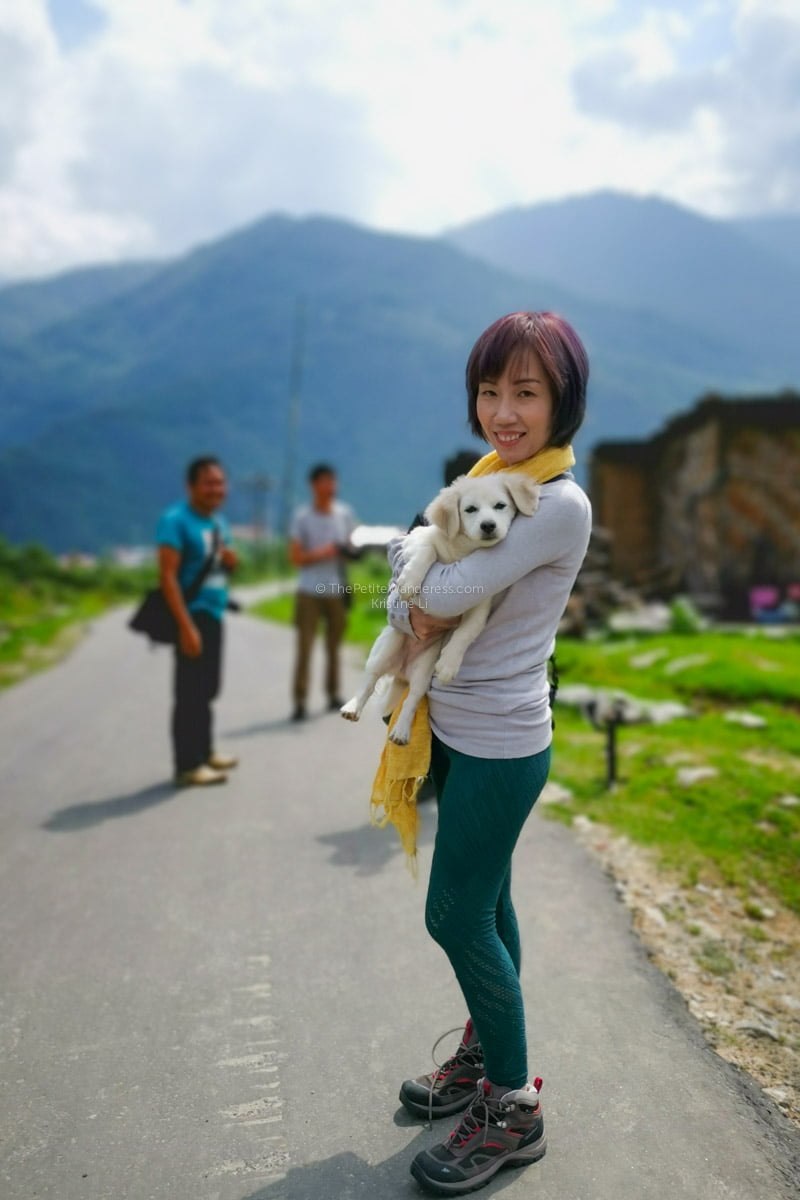The only thing that a road trip through this remote region of Bhutan can promise is the reminder that: Nothing is Really Within Your Control.
And it’s not really for the weak-hearted, nor the first-world traveller that requires utmost comfort all the time. From Trashigang, it was another two hours of driving to the next district in eastern Bhutan – Trashi Yangtse.
Some days, I look back at these photos, and admire my own courage for doing this Eastern Bhutan road-trip.
living life on the edge…. of the mountains?
No steel wirings could be seen securing these massive rocks next to the rough mountain road.
did they roll down from the top or?
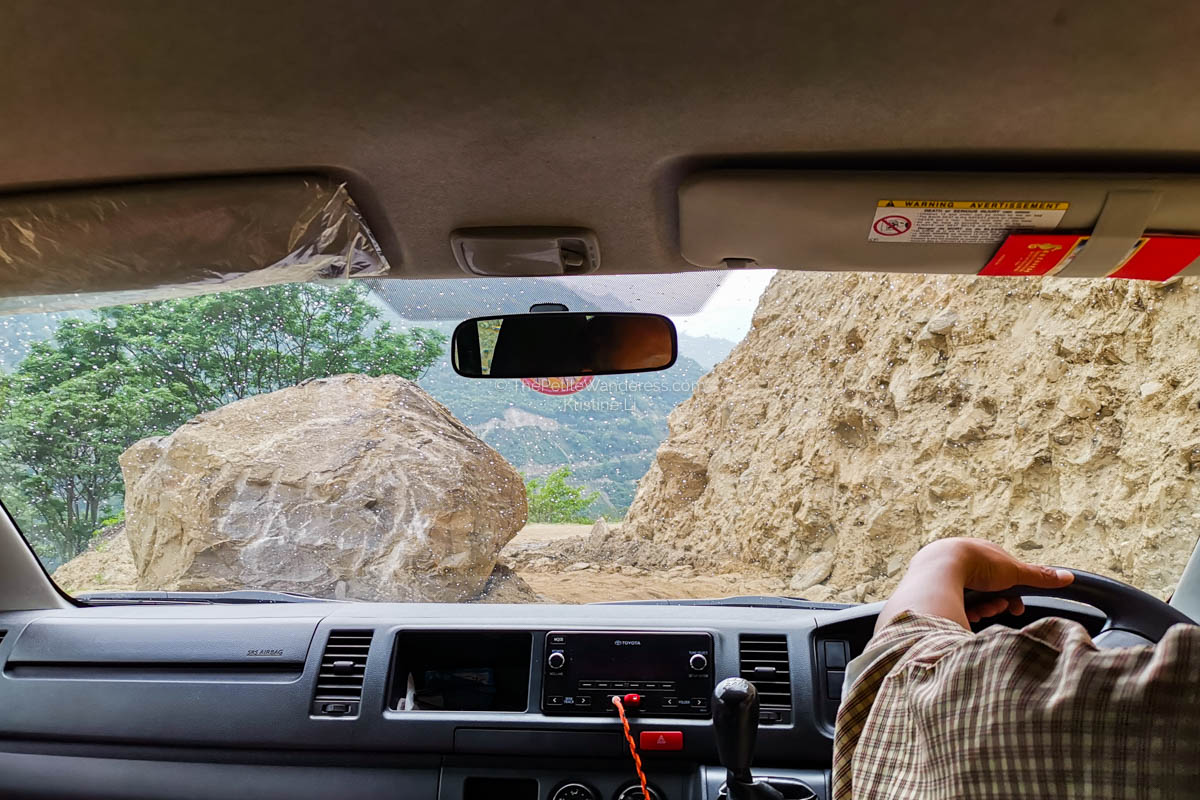
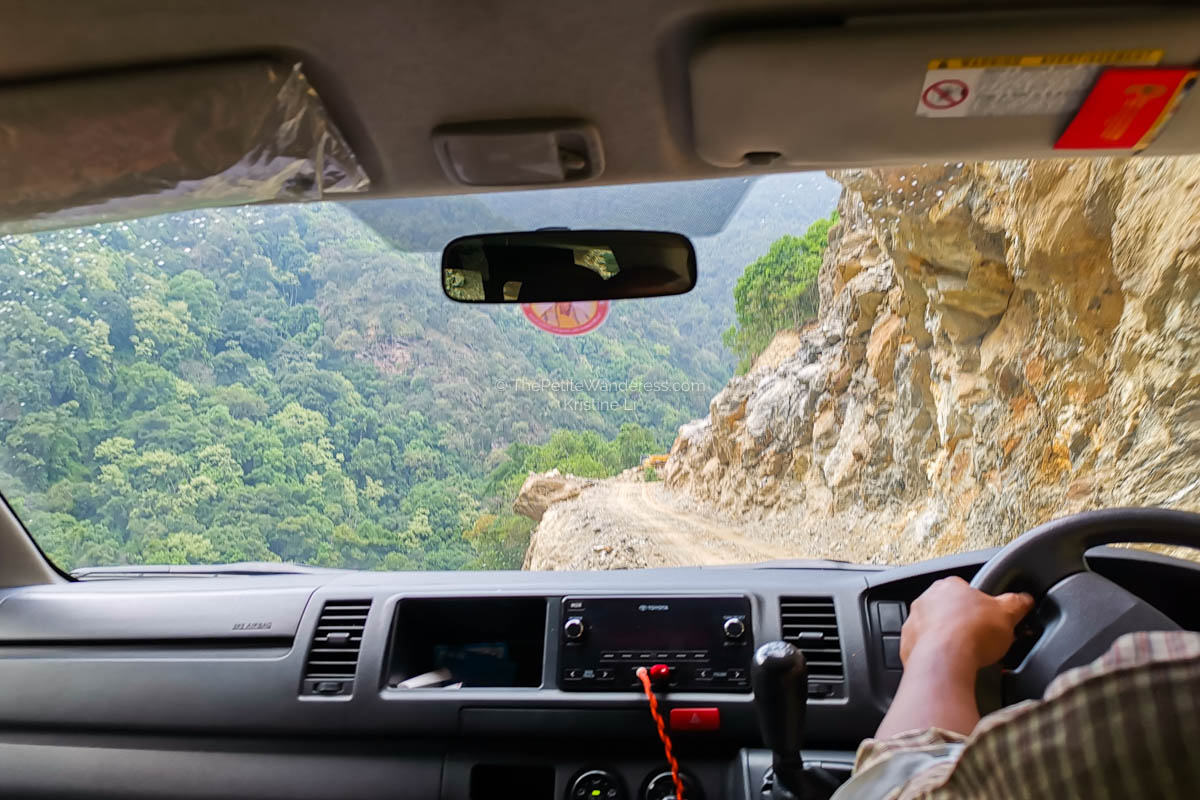
Huge rocks on the cliff we were driving on made our van and my tiny self feel even tinier. Some stones could be heard dropping on top of our van, as our driver Panda drove on. It was rather disturbing to see the mountain wall just right outside our van windows. Some parts of this mountain-cut road were muddy too, adding to the challenge of driving. Well, better they be muddy than us having to drive through bad weather I supposed! #Mindfulness! We must have been either really full of courage, or overcome by insanity, or perhaps a mixture of both.
Most of us were soft or silent, as in in respect of the road ahead of us. I battled the mental anxiety creeping up inside of me as the van proceeded cautiously. At the same time, little bouts of nausea from motion sickness were about to act up – which I managed to alleviate successfully by massaging a magical acupoint learned from TCM.
On this part of the trip from Trashigang to Trashi Yangtse, it was a rather bumpy ride as the road authorities were working on expanding the highway from one- to two-lane, which would take them three years (trip was in 2019).
Another pitstop, another picnic
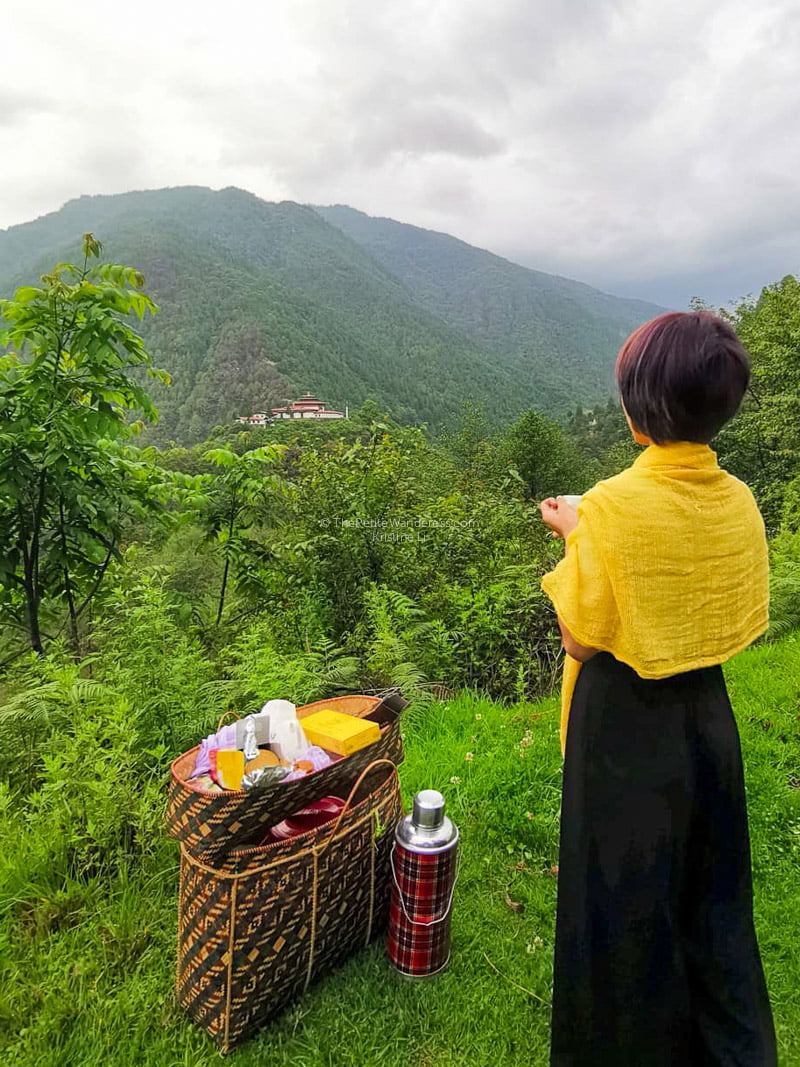
Further on, we paused for a short tea break along the road again, with views of a Dzong across the valleys. I could get used to picnics like this the next time I do a road-trip.
| Check out the 1st part of this Eastern Bhutan road-trip here! |
Hello Trashi Yangtse, one of the newer districts in Bhutan
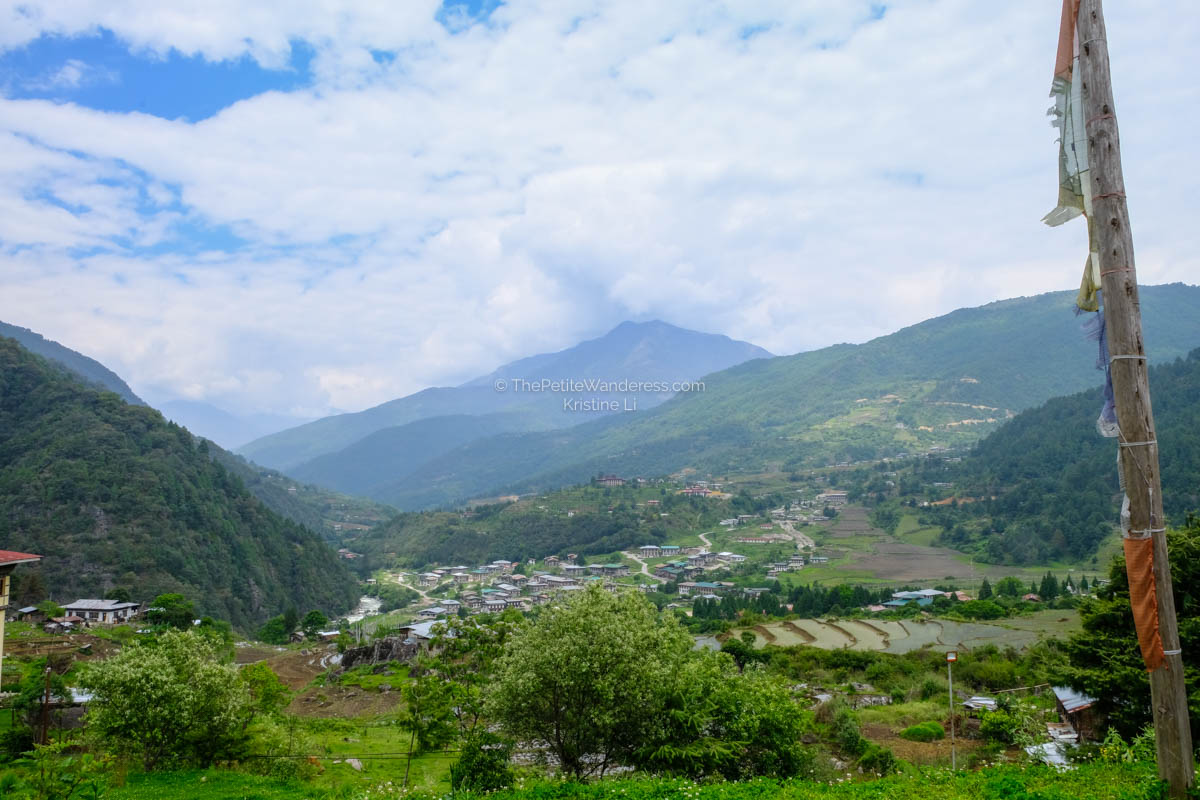
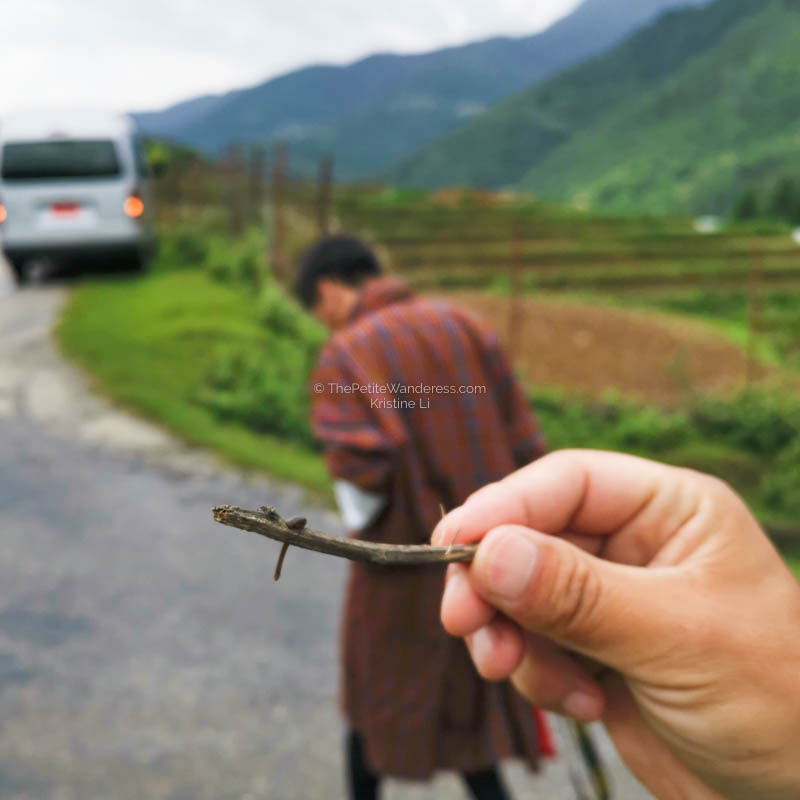
“Careful of leeches“, our Bhutanese guide Ugyen chanted repeatedly in concern while we all were caught up with admiring the views. True enough, he randomly caught a leech from the ground to show us. Bloodsuckers.
At 1800m in elevation, Trashiyangtse turned out to be an up-and-coming district. Our media group was to check into the “best hotel in Trashi Yangtse” – Hotel Karmaling. The rain poured down hard right after we checked in – we had been well-blessed by Bhutan’s weather gods.
However, I wasn’t so sure when I saw the tiny, rather drab-looking hotel reception. After all, it was a stark contrast to the previous hotel in Trashigang with a grand entrance and hugeeee rooms.
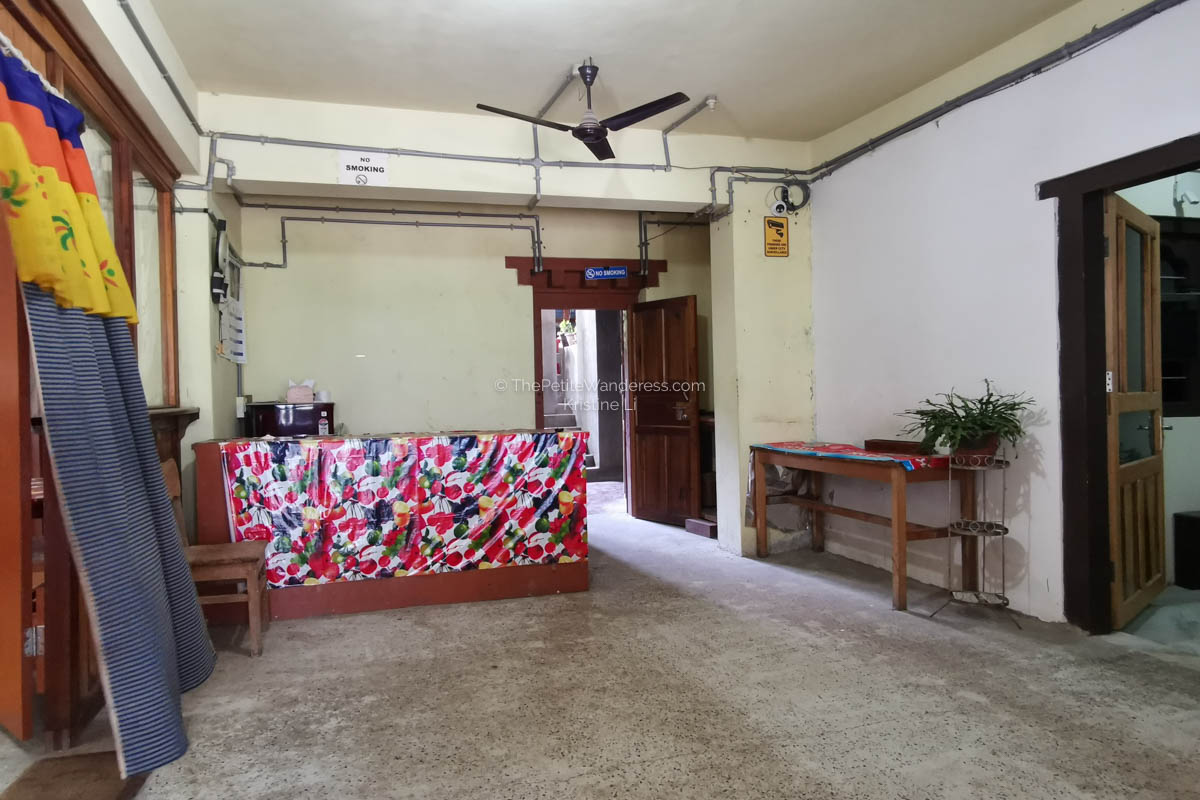
But quickly, I learned to not judge a hotel by its… lobby. This hotel, with its 9 rooms, had bright and clean rooms – some freshly painted in anticipation of our arrival (thank you!). And my bed also comes with a bolster, what a luxury! (I’ll consolidate a post about Bhutan hotels eventually!)
Waking up in Bhutan
Mountain Views and Rural Living
Waking up naturally before 7am, I made myself a cup of hot ginger tea as always, and looked out of this Trashiyangtse hotel room’s windows to the sight of these Bhutanese school-children walking to school. Our photographer friend Lester Ledesma was already out and about, taking photos of the local kids. Life in Bhutan is really lovely to witness.
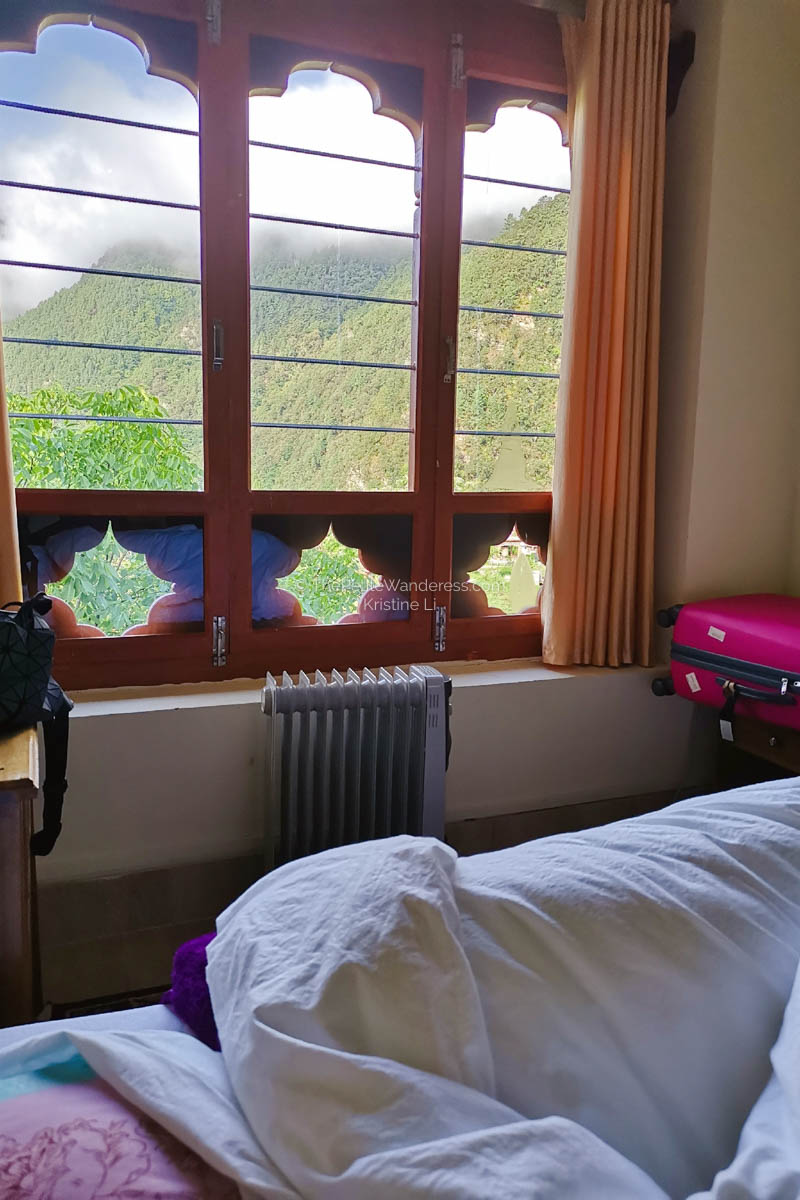
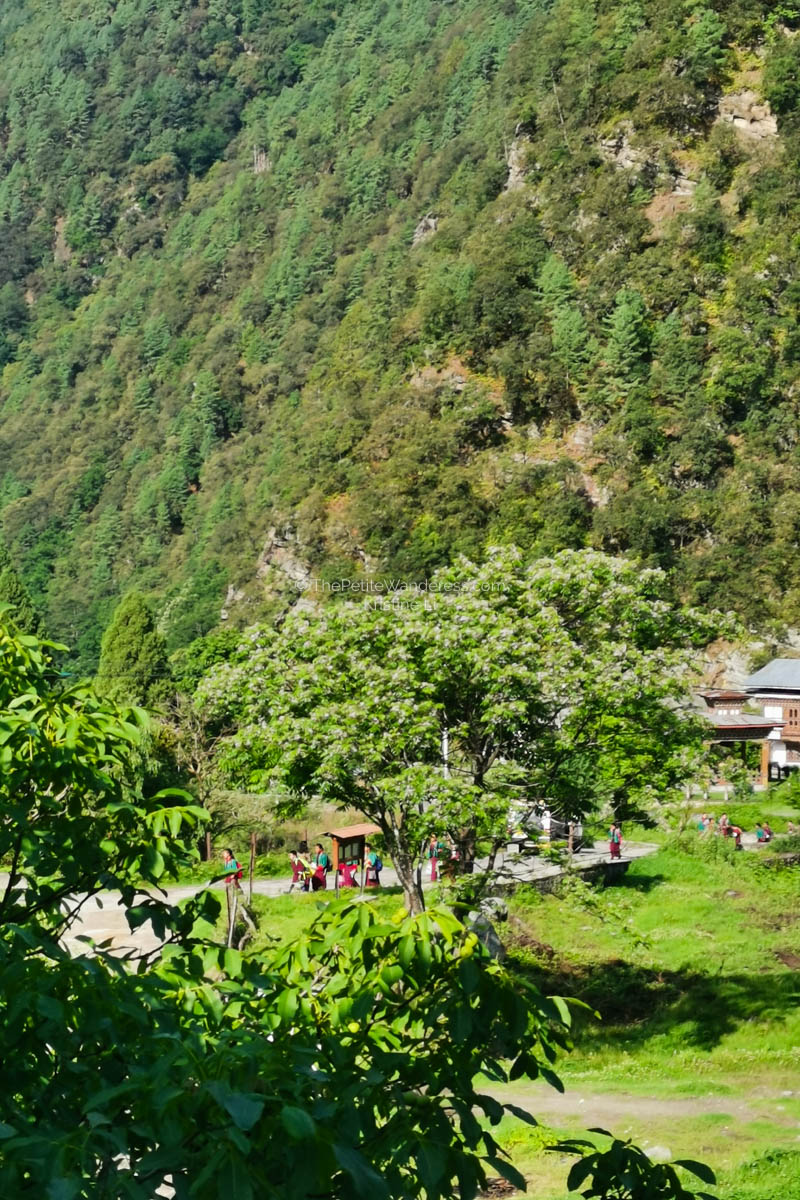

This Art School encourages Students to Get Skilled & Be Somebody
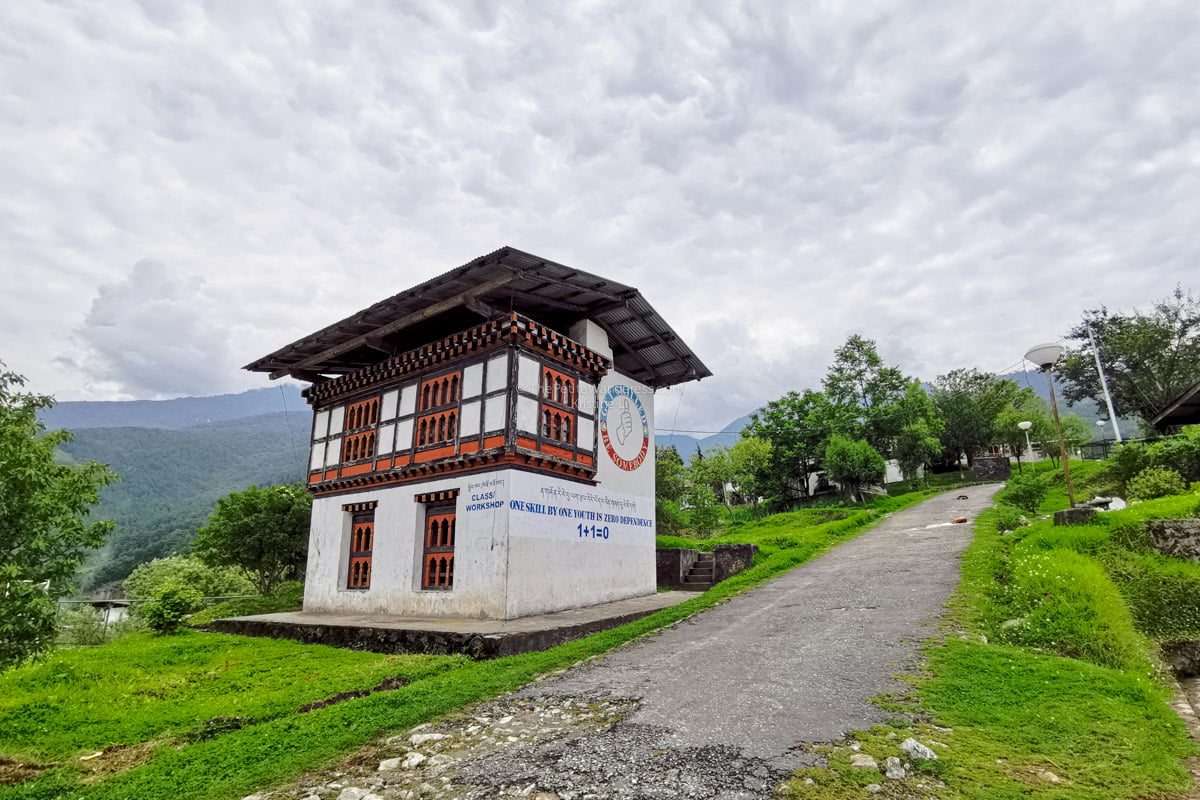
After breakfast, we headed to visit an art school – College of Zorig Chosum, (and another art club called Visual Artists Studio of Trashiyangtse (VAST) in the evening). At the former, young guys were very focused on their acrylic Thanka paintings – which looked amazing, while teenage girls were watching their teacher teach Math calculations in their sewing class.
“Get Skilled, Be Somebody”, read the art school’s slogan. In other rooms, students were carving wood blocks, or doing metal work. Having come from a design background myself in Singapore (where many are typically overworked and underpaid), I was delighted to hear that these art students, upon graduation, will actually be better paid than Bhutanese professionals in Science and technology!
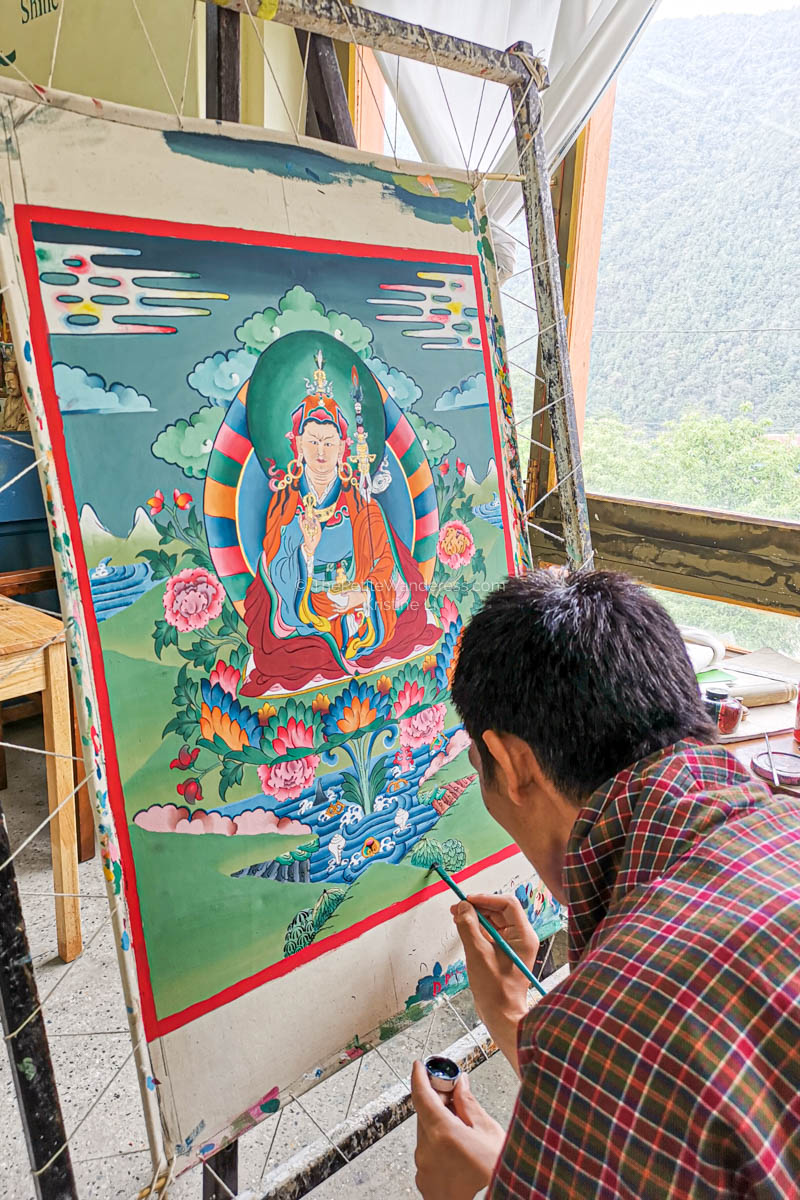
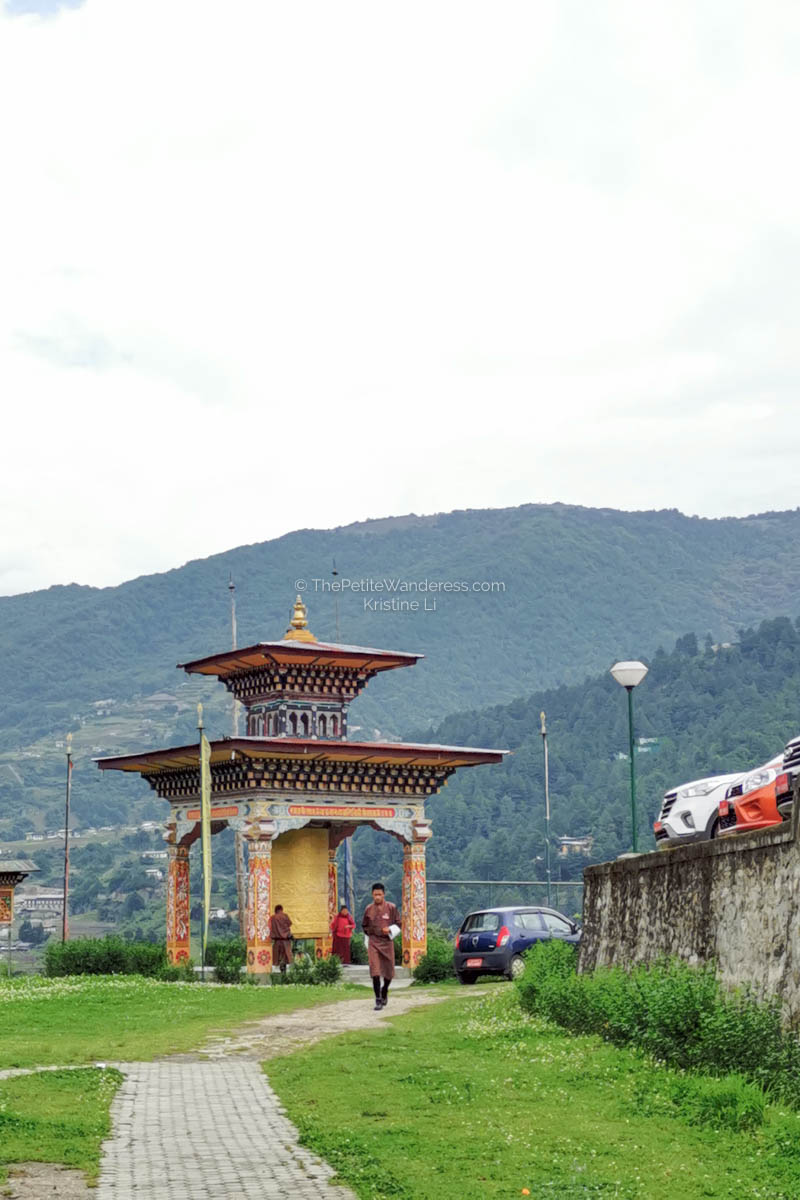
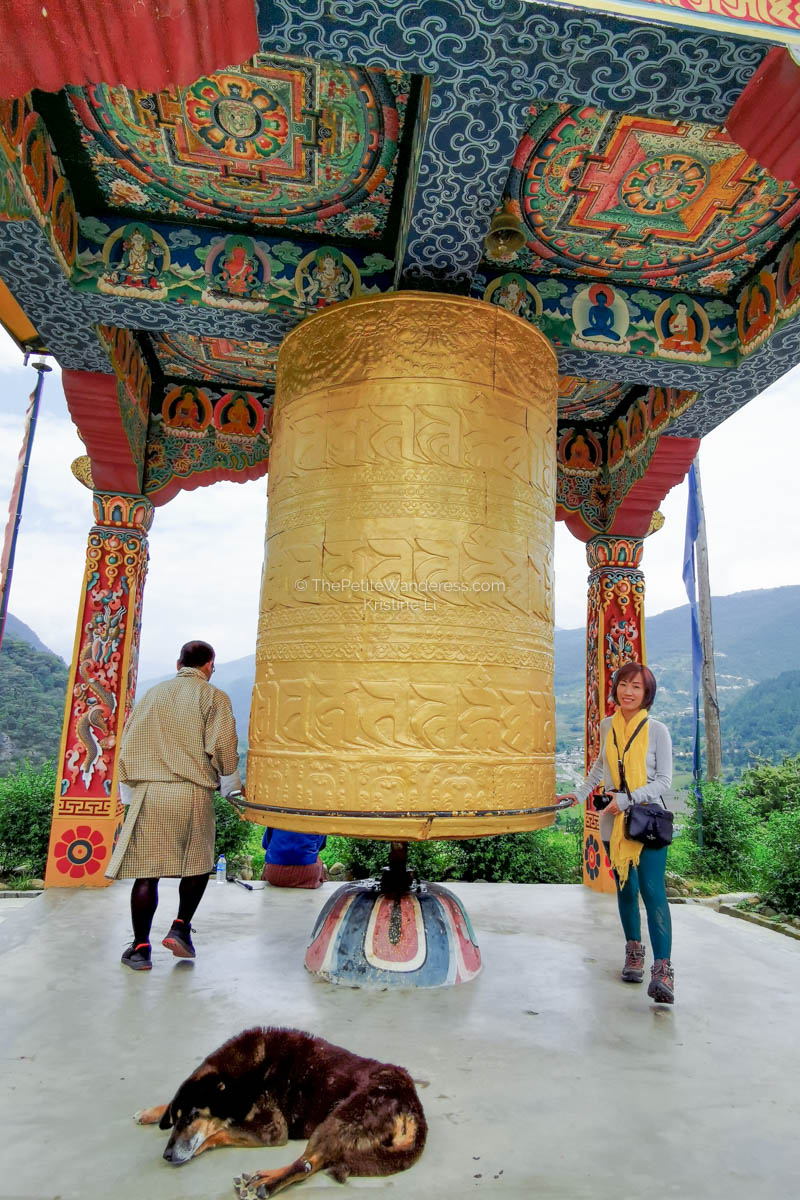
The sound of prayer wheels echoing off the mountains in Bhutan will calm your every sense.
A road-trip isn’t so fun if everything is planned to the last detail.
Honesetly, we had not been following a pre-planned itinerary that much, such as including a trip to the Merak Highlands, as documented in my Part 1 travel diary. Stopping the van and choosing to walk downhill to this village were not in the plans as well, but the views were too beautiful to miss! The sun illuminated everything to perfection.
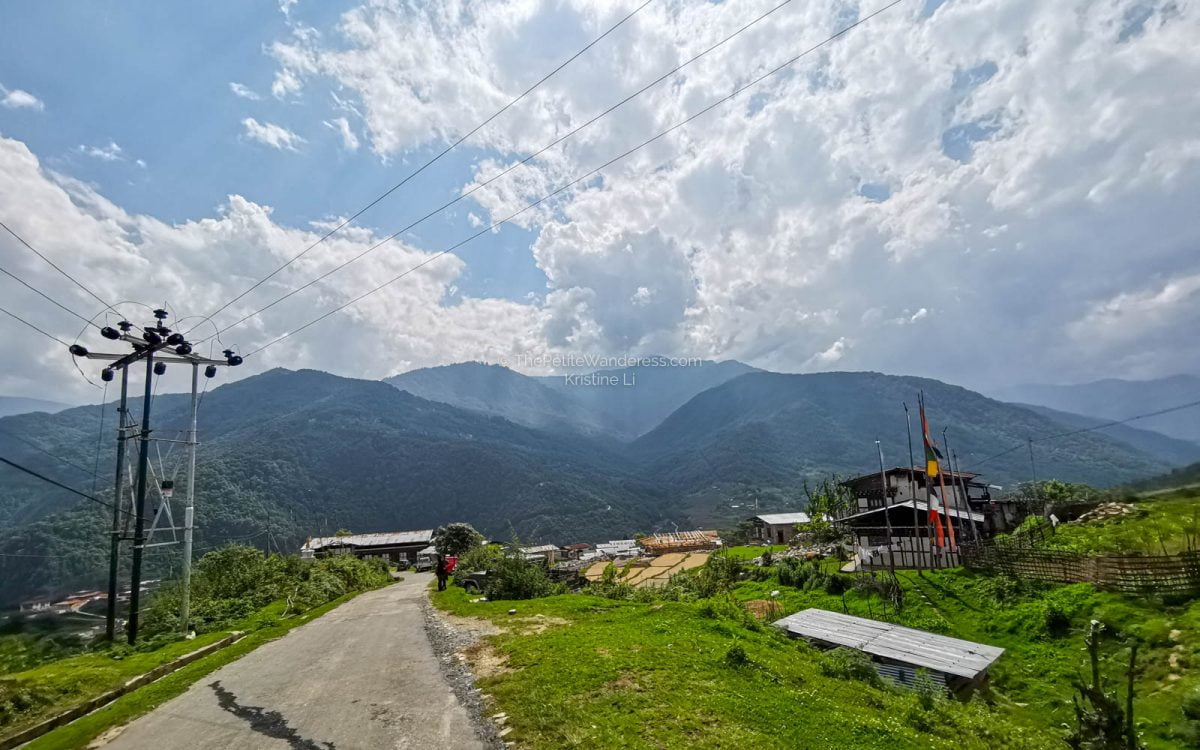
In the eastern side of Bhutan, you’ll notice a rather strange sight –people are working hard in their life, but taking things slow, at the same time.
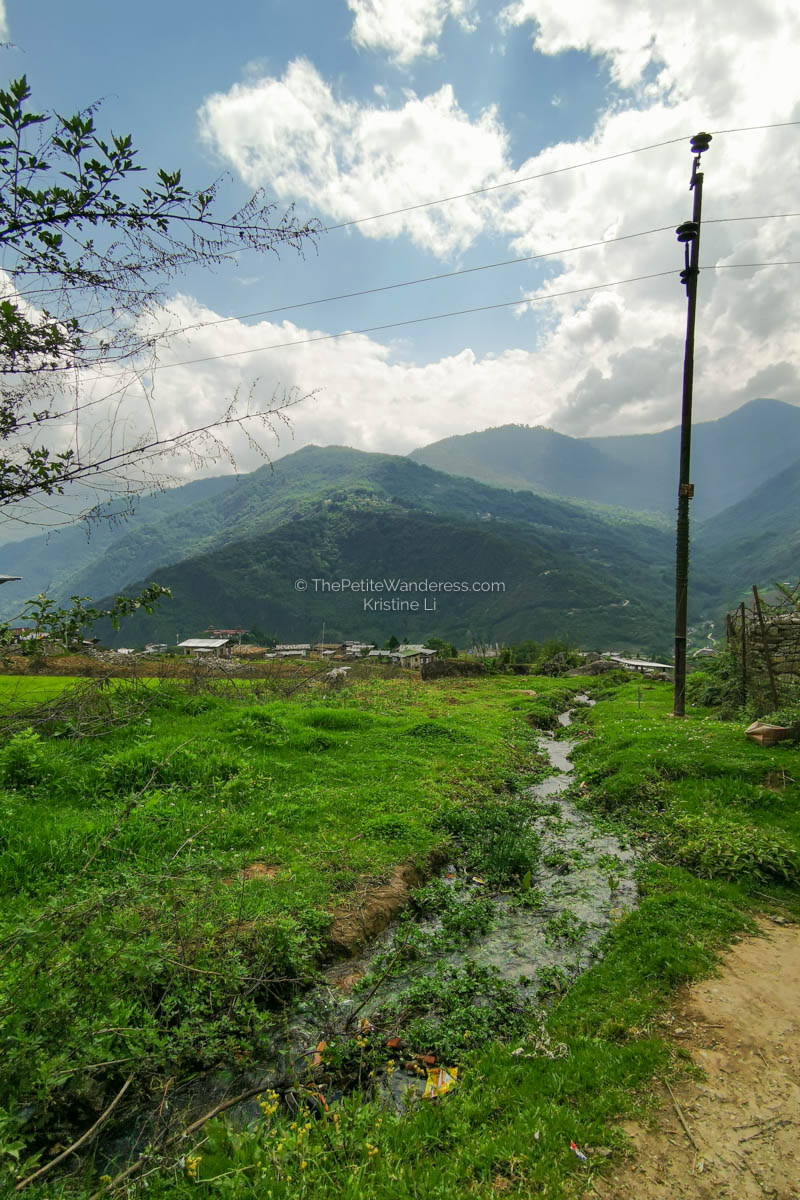

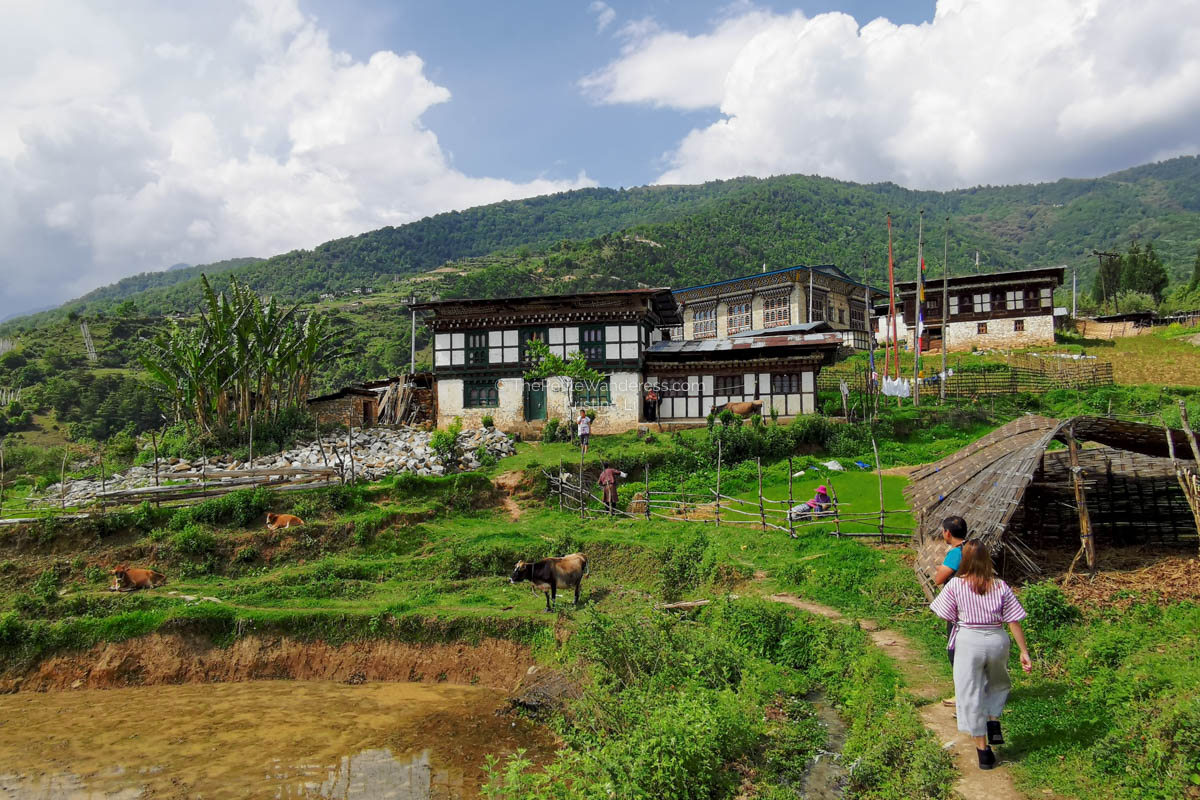
An excited white puppy ran out from a hut, welcoming us like old friends it hadn’t met for a long time.
Farmers were bent over their backs in the rice terraces, methodically and efficiently transplanting seedlings into the wet fields. Our Bhutanese travel guide Ugyen from DrukAsia, spontaneously stepped into the fields to join them, while helping to translate our questions. The cheerful farmers confirmed that they hardly see tourists, so our presence came as a surprise to them. They didn’t mind us visiting. They definitely didn’t mind us watching!
There is very little stress felt in the country, from the local villagers, to the nomadic Highlanders at Merak, and of course, the monks.
| Read: Lessons from the Bhutanese, on living, love & death |
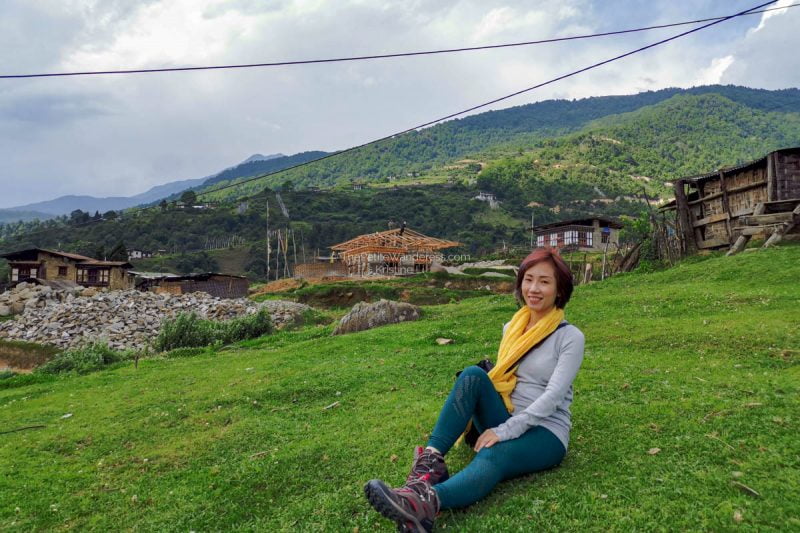
Not that I’ve seen many babies or children, but to encounter them by chance in different districts of Eastern Bhutan, I’ve never heard a baby cry, or even fuss. Strapped to their caretaker’s backs, they’ll simply be watching and observing non-Bhutanese humans curiously.
Some days, it felt like we had booked the entire Eastern Bhutan to ourselves.

This trip to Eastern Bhutan definitely reshaped my views on the ways of the world.
You might think, this part of Bhutan is so remote (I couldn’t find good or useful travel articles before I came here), and barely that many international visitors ever made it here. To be so separated from everyone and everywhere else in the world, I was honestly thrown back by the grace and mannerism displayed by the Bhutanese people we’ve come across so far.
Places are free from rubbish, the locals are so civilized — even the farmers staying in far-flung villages. (This was a complete contrast to the often-rude, highly-educated people we would meet in developed cities now and then.)
The Eastern Bhutanese people will look at us curiously but always greeted us with a genuinely warm smile, and they are so shy even though everyone we met could speak English. I haven’t seen a Bhutanese that looks bad-tempered from you know, suppressing resentment about life & and our endless desires. Bhutan has even went ahead with a no-plastic policy, even at remote districts including markets. Us people in the first world that think we’re so “ahead”, should really rethink what being “ahead” actually means.
Life in this region of Bhutan feels so simple, to the point of being beautiful.
.
.
.
Again, this trip is to be continued in another post.
More articles on Bhutan!
- All Your First-World Questions About Bhutan – Answered!
- Road-tripping on the Road Less Travelled – Eastern Bhutan (Part 1)
- Hiking to the Famous Tiger’s Nest in Bhutan
- Blessed with a Spiritual, Meditation Trip in Bhutan
- What the Bhutanese Can Teach About Love, Life and Death
- Bhutan in December – What to Expect in Winter


